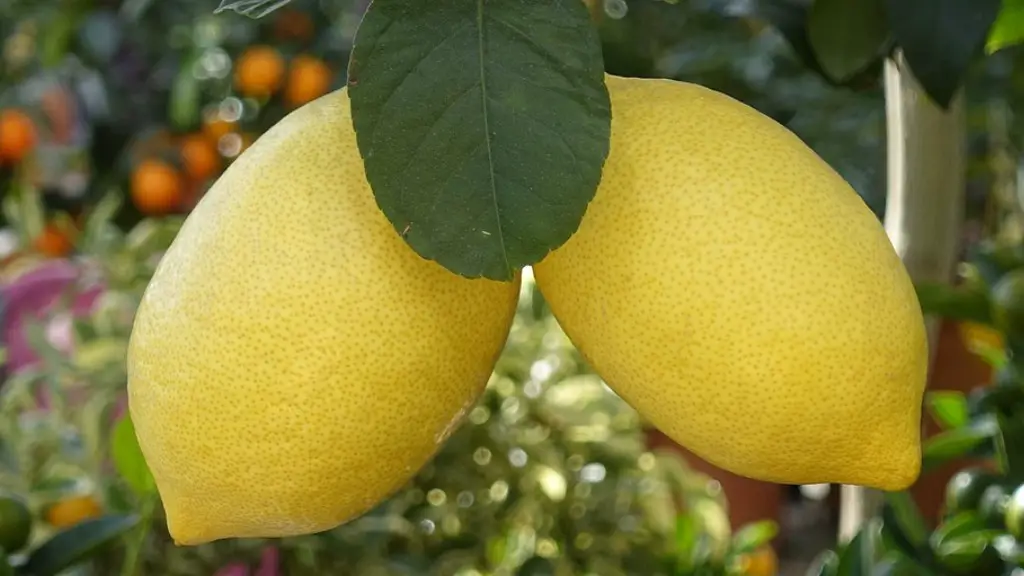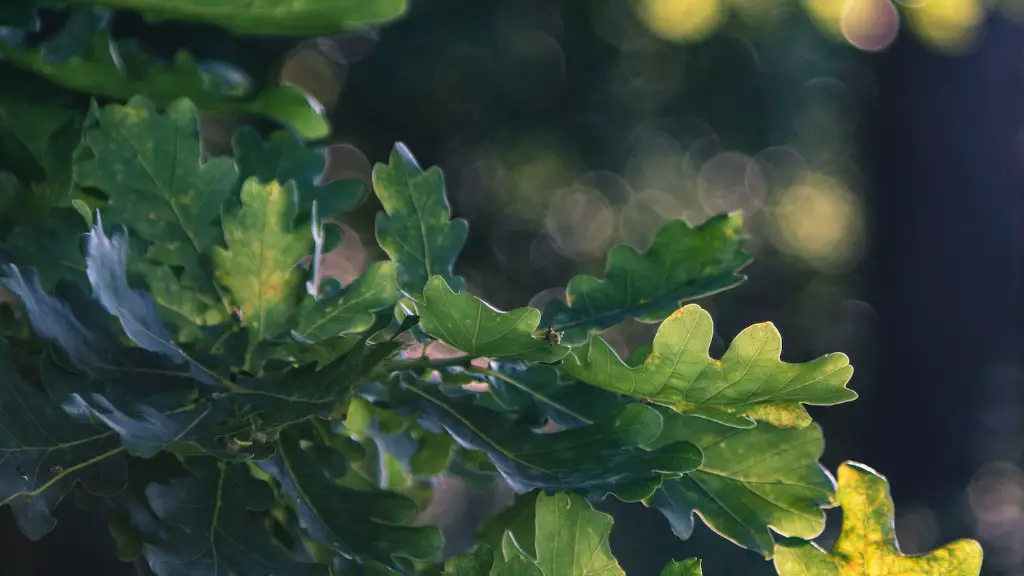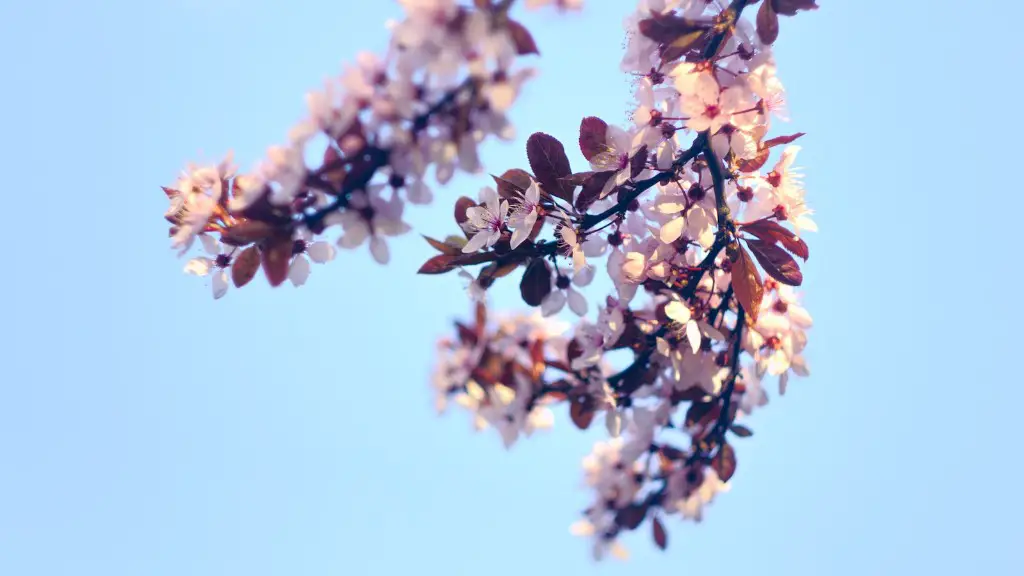Grafting a lemon tree is a rewarding, yet complex task. It requires pruning and maintenance to ensure the tree will grow in the right direction and bear plenty of fruit. There are several ways to graft a lemon tree, but in this article, we’ll focus on the most popular method – Budding. Budding is the most common technique used to propagate and graft citrus trees. It is a form of asexual propagation that uses only one parent plant to produce a new one. You will need some basic materials and tools for the job, such as budding knife, grafting tape, and some sharp pruning shears.
The first step in grafting a lemon tree is to remove the bud from the parent plant. Use the budding knife to make a shallow slit on the parent lemon tree and gently pull out the bud with the budding knife. If done correctly, the bud should be barely visible. After this, apply grafting tape to the bud to protect it from damage when the scion is cut.
Now, use the pruning shears to make a ‘T’-shaped cut on the scion. Make sure the sides of the ‘T’ formed by the cut is slightly longer than the diameter of the bud. This is to ensure there’s no overlap between the edges of the bud and the scion when they’re placed against each other. Lift both the bud and the scion and slide one into the other. When both pieces are connected, use the grafting tape to hold them together securely.
For the next step, wrap the scion and bud with grafting tape again to ensure that there’s no loose movement and secure them firmly. Any loose movements will affect the success of the graft so make sure that the parts are secure. Once the grafting tape is secured, make some shallow cuts on the scion to allow air and nutrient movement. Expose the bud to light and make sure that it receives the warmth it needs to heal and take root.
The final step is to water the bud to provide the necessary moisture and nutrients for growth. Do this every few days until the bud takes root and the graft has healed. You can also provide some slow-release fertilizer to help the bud take root and establish better. Once the new root system has been established, you can start pruning and trimming the parent tree to encourage a healthy growth.
Basiks of Propagation
Propagation is the process of producing new lemon trees from the parent one. It can be done either by seed or asexual methods. Seed propagation is the process of planting harvested seeds in a suitable spot and providing the necessary conditions for their germination and growth. On the other hand, asexual propagation involves taking a part of the parent plant, such as a leaf, a branch, or a bud, and then transferring it to the growth media where it takes root and grows.
Budding is a form of asexual propagation where a bud from the parent plant is carefully removed and transferred to a suitable medium, such as rootstocks, potting mix, nursery beds, or grafting tape and secured in place. Once the bud takes root and is securely established, the new branch can start producing new growth and form a new independent tree.
Grafting Materials Needed
Grafting requires some basic materials and tools to be successful. A budding knife is usually the first essential item, as it is used to removes buds from the parent plant. Grafting tape is also necessary, as it secures the buds and scions in place and prevents disease and pest infestation. Sharp pruning shears are also important to make ‘T’-shaped cuts on the scions.
Other materials that can be used include slow-release fertilizer and rooting hormone to encourage new roots and promote growth. Depending on the situation, you may also need potting mix and rootstocks to provide support and promote natural growth of the root system. A humidity box can also be used to keep the atmosphere moist to promote healing and stop desiccation.
Characteristics of a Good Scion
When selecting the scion, the most important trait is to make sure that the selected branch is healthy and disease-free. It is also important that the size of the scion is suitable for the bud, as an overlap will not guarantee a successful graft. Additionally, make sure that the scions are from the same species as the bud to ensure that the graft is successful.
The scions should also be healthy and not too old or wilted. If the scion is from the same tree as the bud, make sure it is not from the same branch as this would significantly reduce the chances of success. The scion should also be chosen from the current season’s growth, as this would ensure that it is healthy and vigorous.
Grafting Techniques
Grafting lemon tree includes several techniques and methods. Bud grafting is the most popular and widely used method among them. The other methods include rind grafting, wedge grafting, whip grafting, and shield grafting. All of these methods involve connecting a scion to a rootstock to create a new tree. Each method has its own advantages and limitations, and each is suitable in some specific circumstances.
For example, rind grafting is a suitable technique when the scion is smaller than the rootstock, while whip grafting works best on small plants and saplings. Shield grafting is a technique used on small seedlings and roots, while wedge grafting is suitable for larger scions. Each of these techniques requires a certain level of skill, so it is important to practice and gain experience to ensure that the graft is successful.
Maintenance and Care for Lemon Trees
After the graft is successful, it is important to provide proper maintenance and care for the lemon tree. Regular pruning is one of the most important tasks in maintaining a healthy lemon tree. Pruning encourages healthy new growth and removes any dead or diseased branches. In addition to pruning, water the tree regularly and provide adequate fertilizer to promote healthy growth.
Regular inspections should also be done to make sure that the tree is free of pests and disease. If any pests or disease are found, then effective control measures should be implemented to reduce the risks of damage. Furthermore, keep the lemon tree out of direct sunlight and make sure that it receives enough shade during peak hours to prevent excessive heat stress.
How to Avoid Common Mistakes
Grafting requires some specialized knowledge and experience to be successful. One of the most common mistakes amongst novice tree growers is not selecting the right materials and techniques. Bud grafting is the most popular and reliable technique, so it is important to select this method correctly and practice the technique. Make sure that the bud and scion are from the same species, and the size of the scion is slightly larger than the bud.
Failing to secure the graft and not providing adequate support can also lead to graft failure. Make sure that the graft is secured firmly with grafting tape and both parts of the graft should have good contact. Supporting the graft and providing adequate shelter can also help prevent any future damage.
Finally, it is important to provide the tree with adequate water, nutrients, and light after the grafting process. If the new growth does not become established, then it can be difficult to undo the effects of the failed graft, so provide the necessary conditions for success. Regular inspections and pruning will also help reduce the risk of disease and pests.




